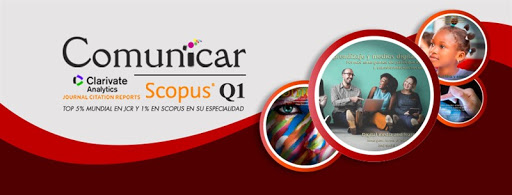Author: Ignacio Aguaded – Translation: Erika-Lucia Gonzalez-Carrion. Universidad Nacional de Loja, Ecuador
As every year, the lists of scientific journals indexed in Scopus, the portal, together with WoS (Web of Science), of world-wide prestige and reference, for two decades, of quality scientific publications, were made public in June.
Since 2017, Scopus has published its own impact factor (CiteScore), which allows for the classification, in the different areas of knowledge, of 41 journals. 317 scientific journals that it currently indexes, being the science portal, at a global level, with a larger database, receiving publications from the five continents, with a bias towards first world countries (Nordic), English-speaking countries (Anglo-Saxon) and scientific-technical branches as opposed to social-humanistic ones, although it must be recognized that these three biases have been progressively corrected in recent years.
Scopus, by Elsevier is today one of the most established portals in the world, being predominant in many areas of the world such as Latin America. Its extensive database and its impact factor (CiteScore) have been gaining prestige for its transparency. Its formula for calculating both the sources cited and the articles cited (as opposed to opaque products such as SJR) is public, and all its sources and measured articles are published online.
They also have a monthly «trailer» that gives periodic information on the progress of a publication month by month, offering data of maximum actuality for editors and authors.
Its measurement is done in percentiles (at least explicitly exceeding the classic quartile), given its precision and exact measurement, appearing the publication in its ranking with its measured evolution.
The aspects that can be clearly improved are its interface, which is not very visual and intuitive, and its scarce capacity for filtering (they do not appear by country, region, etc.), although all this information is present on its exclusive Scopus website (the public data is from Scopus preview, where the researchers’ pages can also be consulted).
As a significant novelty this year, Scopus has changed its measurement range, extending it for another year (from three to four) and collecting the immediately preceding year as the last one, thus significantly increasing the index of the immediacy of the appointments; In other words, the 2019 impact factor has been constructed with the documents published from 2016 to 2019 and the citations from those same years, taking an important step in expanding the citation space and its immediacy, thus overcoming the classic and already very outdated WoS formula (two years and periods completely fulfilled). «Comunicar» journal in 2019 further consolidates its leadership position in Scopus, becoming the second magazine in the world in Cultural Studies (where 1,002 magazines from the five continents are indexed). With an impact factor (CiteScore) of 5.6 and almost 900 citations received, this journal, published in Huelva, is the maximum exponent of Spanish science in the Social Sciences and Humanities in the world, according to Scopus, consolidating its top 1% worldwide. Its leadership, which has been consolidated since 2014 when it began to be Q1, also extends to the areas of Education, the 46th in the world of 1,254 magazines indexed in the base (top 4% worldwide, percentile 96) and the 19th of 387 in Communication (top 5% worldwide, percentile 95). In all the bases «Comunicar» maintains its indisputable leadership among all the Spanish and Latin American journals, therefore, journals published in Spanish in Social Sciences and Humanities.

In the coming days will be published the Journals Citation Reports (JCR) of Web of Science (WoS) and then the top 100 Google Scholar (GSM) in Spanish to close the international reference indexes of 2019. In the latter, in 2019, «Comunicar» also led Spanish science in all disciplines (absolute values) through its leading H index.
